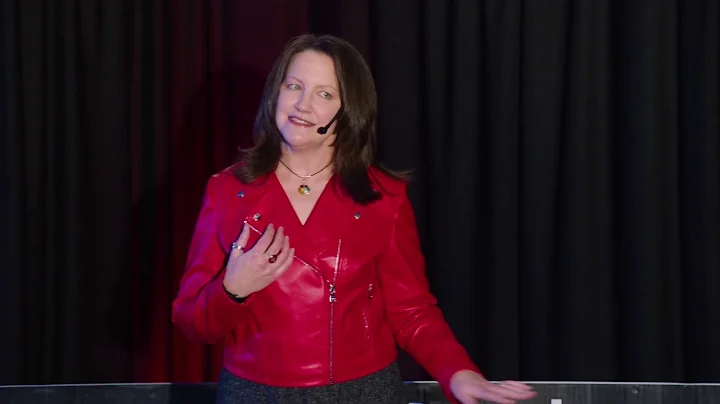Jennifer A Cochran
age ~37
from San Mateo, CA
- Also known as:
-
- Jennifer Ann Cochran
- Jennifer N Cochran
Jennifer Cochran Phones & Addresses
- San Mateo, CA
- San Francisco, CA
- Burlingame, CA
- Redwood City, CA
- Tucson, AZ
- 2315 Davis Dr, Burlingame, CA 94010
Wikipedia References

Jennifer Cochran
Us Patents
-
Surface Modification Of Interpenetrating Polymer Networks
view source -
US Patent:8329826, Dec 11, 2012
-
Filed:Nov 5, 2009
-
Appl. No.:12/590288
-
Inventors:Laura Hartmann - Berlin, DE
Stayce E. Beck - Menlo Park CA, US
Jennifer R Cochran - Stanford CA, US
Curtis W Frank - Cupertino CA, US -
Assignee:The Board of Trustees of the Leland Stanford Junior University - Palo Alto CA
-
International Classification:C08F 8/14
C08F 8/32 -
US Classification:5253299, 5253301, 525379, 525384
-
Abstract:Surface modification methods for an interpenetrating polymer network (IPN) hydrogel to provide a basis for cell or tissue attachment are provided. The method involves the activation of functional groups on the surface of the IPN hydrogel. The activated functional groups are then reacted with amine-containing molecules or hydroxyl-containing molecules. The methods (i) can be performed in an aqueous environment and do not require the use of any organic solvent, (ii) do not require UV treatment, thereby avoiding denaturation of the IPN hydrogel or proteins, and/or (iii) can be performed as a one pot reaction.
-
Engineered Integrin Binding Peptides
view source -
US Patent:8536301, Sep 17, 2013
-
Filed:Apr 3, 2009
-
Appl. No.:12/418376
-
Inventors:Jennifer R. Cochran - Stanford CA, US
Richard Kimura - Stanford CA, US
Aron M. Levin - Menlo Park CA, US -
Assignee:The Board of Trustees of the Leland Stanford Junior University - Palo Alto CA
-
International Classification:A61K 38/04
-
US Classification:530324
-
Abstract:Engineered peptides that bind with high affinity (low equilibrium dissociation constant (Kd)) to the cell surface receptors of fibronectin (αβ) or vitronectin (αβand αβintegrins) are disclosed. These peptides are based on a molecular scaffold into which a subsequence containing the RGD integrin-binding motif has been inserted. The subsequence (RGD mimic) comprises about 9-13 amino acids, and the RGD contained within the subsequence can be flanked by a variety of amino acids, the sequence of which was determined by sequential rounds of selection (in vitro evolution). The molecular scaffold is preferably based on a knottin, e. g. , EETI (Trypsin inhibitor 2 (Trypsin inhibitor II) (EETI-II) [(Jumping cucumber)], AgRP (Agouti-related protein), and Agatoxin IVB, which peptides have a rigidly defined three-dimensional conformation. It is demonstrated that EETI tolerates mutations in other loops and that the present peptides may be used as imaging agents.
-
Inhibition Of Axl Signaling In Anti-Metastatic Therapy
view source -
US Patent:8618254, Dec 31, 2013
-
Filed:Jul 20, 2012
-
Appl. No.:13/554954
-
Inventors:Amato J. Giaccia - Stanford CA, US
Erinn Bruno Rankin - Waltham MA, US
Jennifer R. Cochran - Stanford CA, US
Douglas Jones - Cambridge MA, US
Mihalis Kariolis - Stanford CA, US
Katherine Fuh - Palo Alto CA, US
Yu Miao - Sunnyvale CA, US -
Assignee:The Board of Trustees of the Leland Stanford Junior University - Palo Alto CA
-
International Classification:C07K 14/705
C07K 14/71
C07K 16/46
A61K 38/16 -
US Classification:530350, 5303873, 514 11
-
Abstract:Compositions and methods are provided for alleviating cancer in a mammal by administering a therapeutic dose of a pharmaceutical composition that inhibits activity of AXL protein activity, for example by competitive or non-competitive inhibition of the binding interaction between AXL and its ligand GAS6.
-
Mutant Epidermal Growth Factor Polypeptides, Nucleic Acids, And Uses Therefor
view source -
US Patent:20080249008, Oct 9, 2008
-
Filed:Mar 20, 2007
-
Appl. No.:11/725695
-
Inventors:Jennifer R. Cochran - Stanford CA, US
K. Dane Wittrup - Chestnut Hill MA, US -
International Classification:A61K 38/18
C07K 14/485
A61P 35/00
A61P 25/00
A61K 48/00
C40B 30/04
C12P 21/00
A61P 9/00
A61P 17/02
C07H 21/00 -
US Classification:514 12, 530324, 536 235, 514 44, 435 691, 506 9
-
Abstract:The present invention is based, in part, on our discovery that EGF can be engineered to generate mutants that bind to the EGF receptor (EGFR) of a cell and that have a desirable effect on the activity of the cell. For example, the mutants can agonize the receptor (i.e., increase a biological activity of the receptor), or antagonize the receptor (i.e., decrease or inhibit a biological activity of the receptor). In turn, the rate at which the cell proliferates, for example, can be changed. Moreover, some of these mutants bind EGFR with a higher affinity than wild-type EGF exhibits. The affinity may increase by about, for example, 2-, 5-, 10-, 15-, 20-, 25-, 30-, 50-, or 100-fold relative to wild-type EGF.
-
Sequential Coupling Of Biomolecule Layers To Polymers
view source -
US Patent:20090117166, May 7, 2009
-
Filed:Aug 15, 2008
-
Appl. No.:12/228884
-
Inventors:David Myung - Santa Clara CA, US
Stayce Beck - Menlo Park CA, US
Jaan Noolandi - Mountain View CA, US
Christopher N. Ta - Saratoga CA, US
Jennifer R. Cochran - Stanford CA, US
Curtis W. Frank - Cupertino CA, US -
International Classification:A61F 2/04
A61K 9/10
A61K 38/39
A61K 38/30
A61K 38/18 -
US Classification:424422, 424484, 514 12
-
Abstract:A bio-mimetic or bio-implantable material based on a sequential process of coupling biomolecule layers to a polymer layer is provided. In general, the material could be based on two or more biomolecule layers starting with one of the layers covalently linked to the polymer layer via cross-linkers and the other layers sequentially and covalently linked using cross-linkers to the previously added layer. The polymer layer could be a hydrogel or an interpenetrating polymer network hydrogel. The first layer of biomolecules could be a collagen type, fibronectin, laminin, extracellular matrix protein, or any combinations thereof. The second layer of biomolecules typically is a growth factor, protein or stimulant. The cross-linkers are either water soluble or insoluble bifunctional cross-linkers or azide-active-ester crosslinkers. The material and process as taught in this invention are useful in the field of tissue engineering and wound healing.
-
Devices For The Treatment Of Wounds And Methods And Kits Therefor
view source -
US Patent:20090280182, Nov 12, 2009
-
Filed:Apr 29, 2009
-
Appl. No.:12/387318
-
Inventors:Stayce Beck - Menlo Park CA, US
David Myung - Santa Clara CA, US
Curtis W. Frank - Cupertino CA, US
Jennifer R. Cochran - Stanford CA, US
Michael T. Longaker - Atherton CA, US
George P. Yang - San Francisco CA, US
Daphne P. Ly - Palo Alto CA, US
Shira G. Mandel - Palo Alto CA, US -
International Classification:A61K 9/10
A61K 38/16 -
US Classification:424486, 514 12
-
Abstract:Interpenetrating network hydrogels are described that may be incorporated into wound dressings and/or in implants. The properties of the interpenetrating network hydrogel may be tuned to control an amount of moisture in a wound environment. The devices, methods, and kits described herein may be adapted to treat a variety of wound types at a variety of healing stages over a range of time scales. Some hydrogels may be configured to deliver one or more vulnerary agents to a wound. The interpenetrating network hydrogels may also be adapted to control a rate and/or amount of moisture uptake so that the hydrogels may be used as expandable implants to expand tissue.
-
Cystine Knot Peptides Binding To Alpha Iib Beta 3 Integrins And Methods Of Use
view source -
US Patent:20110136740, Jun 9, 2011
-
Filed:Nov 2, 2010
-
Appl. No.:12/938216
-
Inventors:Jennifer R. Cochran - Stanford CA, US
Adam P. Silverman - Redwood City CA, US
Mihalis S. Kariolis - Stanford CA, US -
Assignee:The Board of Trustees of the Leland Stanford Junior University - Palo Alto CA
-
International Classification:A61K 38/16
C07K 14/00
C07K 1/14
A61P 7/02 -
US Classification:514 138, 530321, 514 211, 530300
-
Abstract:Disclosed are peptides having a cystine knot structural motif and comprising a sequence engineered for specificity against αβintegrin, found on platelets, and a method of using the same in anti-thrombotic therapies. The present peptides utilize a cystine knot scaffold derived from modified agouti-related protein or agatoxin, An alternate library screening strategy was used to isolate variants of peptides that selectively bound to αβintegrin or to both αβand αβintegrins. Unique consensus sequences were identified within the identified peptides suggesting alternative molecular recognition events that dictate different integrin binding specificities. In addition, the engineered peptides prevented human platelet aggregation in a plasma-based assay and showed high binding affinity for αβintegrin.
-
Polypeptides Targeting Vascular Endothelial Growth Factor Receptor-2 And Alpha V Beta 3 Integrin
view source -
US Patent:20120020889, Jan 26, 2012
-
Filed:Jan 18, 2010
-
Appl. No.:13/145059
-
Inventors:Jennifer R. Cochran - Stanford CA, US
Adam Silverman - Redwood City CA, US
Douglas Jones - Cambridge MA, US
Niv Papo - Palo Alto CA, US -
International Classification:A61K 49/00
A61K 38/18
C12N 15/62
C12N 5/071
A61P 17/06
C40B 30/04
A61P 35/00
A61P 27/02
A61P 19/02
C07K 19/00
G01N 33/574 -
US Classification:424 91, 530399, 514 81, 536 234, 435375, 435 723, 506 9
-
Abstract:Polypeptides comprising variant vascular endothelial growth factor sequences are provided. The polypeptides are useful in cancer imaging, cancer diagnosis, monitoring and treatment as well as treatment of diseases characterized by excessive neovascularization.
Medicine Doctors

Jennifer V. Cochran
view sourceSpecialties:
Pediatrics, Adolescent Medicine
Work:
Green Road Pediatrics
1611 S Grn Rd STE 35, Cleveland, OH 44121
(216)3823800 (phone), (216)3815198 (fax)
1611 S Grn Rd STE 35, Cleveland, OH 44121
(216)3823800 (phone), (216)3815198 (fax)
Education:
Medical School
University of Vermont COM
Graduated: 1994
University of Vermont COM
Graduated: 1994
Procedures:
Destruction of Benign/Premalignant Skin Lesions
Hearing Evaluation
Psychological and Neuropsychological Tests
Vaccine Administration
Hearing Evaluation
Psychological and Neuropsychological Tests
Vaccine Administration
Conditions:
Acute Conjunctivitis
Acute Pharyngitis
Acute Sinusitis
Acute Upper Respiratory Tract Infections
Atopic Dermatitis
Acute Pharyngitis
Acute Sinusitis
Acute Upper Respiratory Tract Infections
Atopic Dermatitis
Languages:
English
Description:
Dr. Cochran graduated from the University of Vermont COM in 1994. She works in South Euclid, OH and specializes in Pediatrics and Adolescent Medicine. Dr. Cochran is affiliated with Hillcrest Hospital.

Jennifer Cochran
view sourceSpecialties:
Pediatrics
Pediatric Adolescent Medicine
Pediatric Adolescent Medicine
Education:
University of Vermont (1994)
Name / Title
Company / Classification
Phones & Addresses
Partner
PROXIMITY REAL ESTATE CORPORATION
Real Estate Agent/Manager · Real Estate Agents
Real Estate Agent/Manager · Real Estate Agents
2144 Grn St #12, San Francisco, CA 94123
1342 Broadway, San Francisco, CA 94109
(415)3327769
1342 Broadway, San Francisco, CA 94109
(415)3327769
TRC EDUCATIONAL SERVICES, LLC
Manager
Cedar Hill Financial Services LLC

Jennifer Cochran Sullins
view source
Jennifer Cochran Rittenbe...
view source
Jennifer Pennycook Cochran
view source
Jennifer Cochran
view source
Jennifer Krupinski Cochran
view source
Jennifer Wojtowicz Cochran
view source
Jennifer McDonald Cochran
view source
Jennifer Cochran Wyrick
view sourcePlaxo

Jennifer Cochran
view sourceElkins, WV

Jennifer Cochran
view sourceWebFusion5

Jennifer Cochran
view sourceGlaxoSmithKline
Classmates

Jennifer Cochran (Barber)
view sourceSchools:
Grosse Pointe South High School Grosse Pointe MI 1986-1990
Community:
Chris Scheer, Christine Haddad

Jennifer Crom (Cochran)
view sourceSchools:
Muskingum-Perry Career Center Zanesville OH 1980-1984
Community:
Victoria Zazueta, Brent Tysinger, James Sheline, Jeff Hickenbottom

Jennifer Cochran
view sourceSchools:
Queen Creek Middle School Queen Creek AZ 1993-1997, Queen Creek High School Queen Creek AZ 1997-1998
Community:
David Legg

Jennifer Cochran (Taylor)
view sourceSchools:
Western Beaver High School Industry PA 1999-2003
Community:
Michelle Lytle, Jane Wamsley, Joseph Zeljeznjak, Sally Rodway

Jennifer Cochran
view sourceSchools:
Frontier High School New Matamoras OH 1979-1983
Community:
Mary Eddy

Jennifer Henson (Cochran)
view sourceSchools:
Bloomington Junior High School Bloomington IL 1980-1984
Community:
Christy Simmons

Jennifer Cochran
view sourceSchools:
Northridge High School Johnstown OH 1992-1996
Community:
Beverly Green, Gary Christy, John Mcdaniel, Cheryl Holbrook

Jennifer Cochran
view sourceSchools:
Ellis Technical High School Danielson CT 1997-2001
Community:
Todd Chauvin
Flickr
Googleplus

Jennifer Cochran
Education:
Lake Erie College - Legal Studies, Tiffin University - Humanities
About:
I am a KJV-believing Christian mom of 4 and wife who loves hunting for bargains and sharing them on my blog Cleveland Coupon Divas. Check it out!
Tagline:
Cleveland Coupon Divas
Bragging Rights:
Masters in Humanities, Mom of 4, Saved in 2012

Jennifer Cochran
Work:
Juniper's Creations - Owner (2010)
Tagline:
I'm the owner of Juniper's Creations. I make every product you see posted on Juniper's Creations.

Jennifer Cochran
Education:
Berkmar

Jennifer Cochran
Work:
SAHM
Tagline:
Dance Mom

Jennifer Cochran
Work:
Dublin Ear, Nose and Troat - LPN

Jennifer Cochran

Jennifer Cochran

Jennifer Cochran
News

Scientists engineer one protein to fight cancer and regenerate neurons
view source- Now a team led by Stanford bioengineer and department chair Jennifer Cochran has tweaked one ligand in slightly different ways to produce two startlingly different results. One set of alterations caused neuronal cells to regenerate, while different tweaks to the same protein inhibited lung tumor gro
- Date: Jun 08, 2020
- Category: Science
- Source: Google
Youtube
Myspace
Get Report for Jennifer A Cochran from San Mateo, CA, age ~37



















